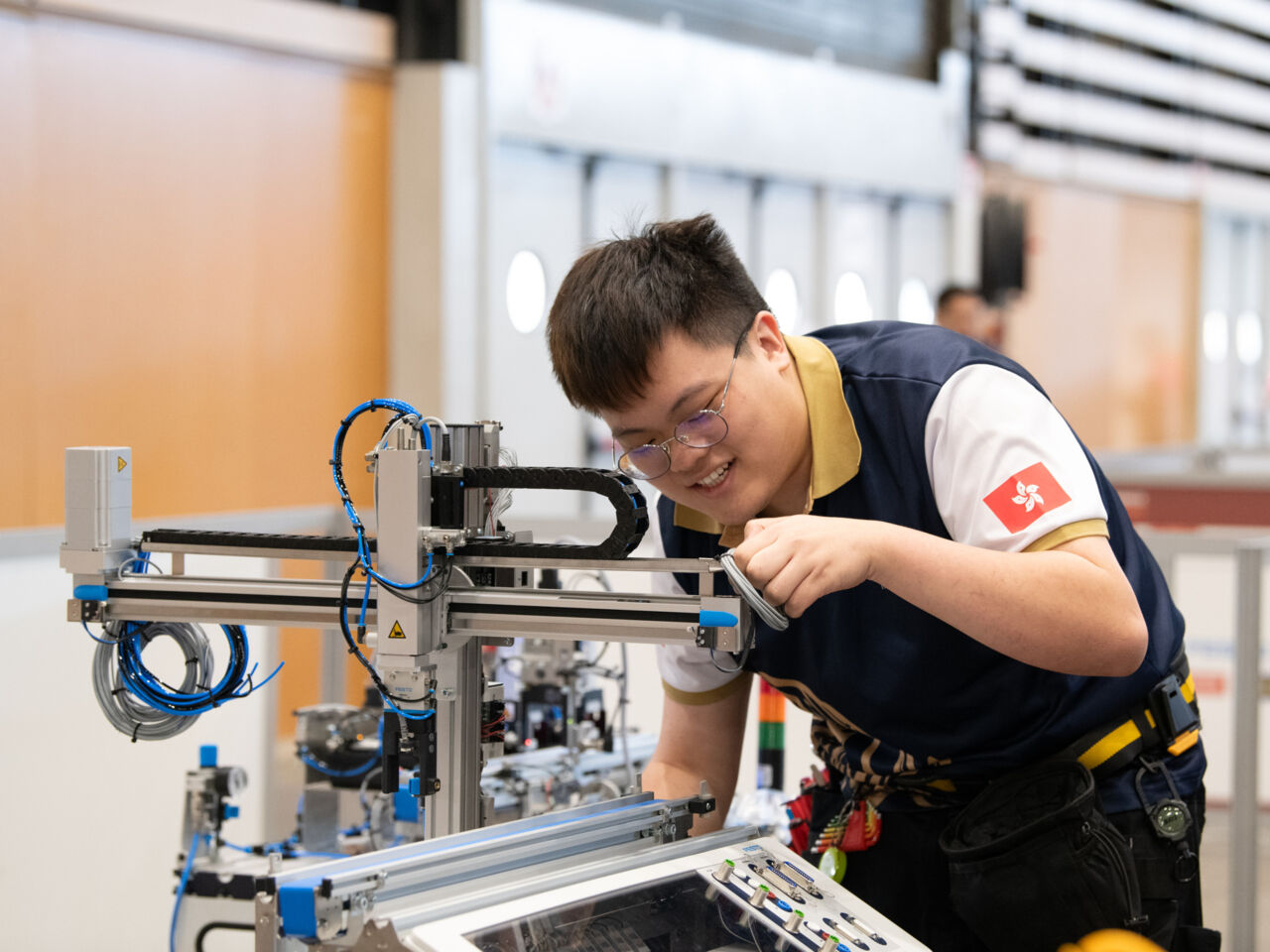5 August 2025
Using WorldSkills Occupational Standards to enhance workplace learning
WorldSkills Hong Kong is leading an effective integration of the WorldSkills Occupational Standards into its Technical and Vocational Education and Training to help students and local industries thrive.

The WSOS define occupations, globally, in terms of full mastery. In this way, they give national systems a set of international benchmarks and reference points to support their own development. As a WorldSkills Member, WorldSkills Hong Kong values the rigour of the WorldSkills Occupational Standards in determining skills excellence at a WorldSkills Competition. However, this Member has gone one step further and woven the global benchmarks into the very fabric of its skills training.
As Amy Liu, Director, Skills Competitions Office of the Vocational Training Council (VTC), explains, “The Council has been a Member of WorldSkills since 1997, and we are deeply committed to aligning our vocational programmes with international recognized standards. Our aim is to develop highly skilled talent who meet the evolving demands of industry.”
One of the ways it has done this is through its innovative Workplace Learning and Assessment framework, which is a structured pedagogical practice. It has been designed to lift the attainment levels of its students and align its seven Qualification Framework (QF) Levels more closely with international standards and local industry needs.
There are three clear planning stages in the Workplace Learning and Assessment framework:
- Firstly, the framework shows how to identify Unit Standards for a task or activity in each skill. These Unit Standards become the new benchmark from which to set learning outcomes for a student.
- Then it helps VTC and the industry partners develop the content of the workplace assessment and choose which tasks will be best to measure skills against the Unit Standards.
- Lastly it helps them decide on the best possible process of observing, collecting, recording and judging a student’s competence against the Unit Standards.
The WorldSkills Occupational Standards play a vital part in the Unit Standards, ensuring they are competency-based, outcome-focused, and embedded in authentic workplace settings because WorldSkills aligns all its activities on the needs of the global workplace. The WorldSkills Occupational Standards are currently the only global benchmark used by WorldSkills Hong Kong, alongside its own local standards, the Specification of Competency Standards in Hong Kong, and the New Zealand Qualifications Authority (NZQA) Registered Unit Standards.
WorldSkills undertakes a survey of business and industry every two years to ensure the WSOSs are up to date. Amy explains, “Whenever we see updated WorldSkills Occupational Standards, we inform our academic partners who review them and use them to improve the programmes. These standards give us confidence that we are adequately preparing young people not just for graduation, but most importantly for employment.”
This approach has seen an increase in the amount of practical learning students now do within industry.
Amy says, “We wanted to move more of that theoretical learning directly into the workplace. Workplace Learning and Assessments mean employers play a greater role as assessors and validate a student’s competency against real-world tasks.”
In Hong Kong, industry partners are fully on board and have been quick to recognize the value to them. The Workplace Learning and Assessment framework means industries help co-design the QF Levels that students work towards. It also means they are playing a more active part in the training and assessment of their skills to make sure they are directly related to what an employer needs.
Amy explains, “In automotive training for example, instead of teaching brake systems in a classroom, students learn directly on the car models they’ll encounter at work, with company trainers evaluating their proficiency.”
Amy continues, “Employers see that, by participating, they’re helping to grow skilled talent that they can retain after graduation. It is an investment in both workforce development and continuous professional development for their own managers.”
Using this approach, WorldSkills Hong Kong has seen a significant uplift in students and apprentices securing new employment opportunities and an increase in employer retention rates. Amy says, “Our current data is showing that around 97% of apprentices stay in the same industry after training, with over 83% staying with the same employer. It is a win-win.”
These retention rates and increasing engagement in Workplace Learning and Assessments by both trainers and employers clearly demonstrate the importance of referencing the WorldSkills Occupational Standards within the vocational curricula.
David Hoey, CEO of WorldSkills International, says, “WorldSkills Hong Kong’s use of the WorldSkills Occupational Standards sets a powerful example to other Members about how to raise TVET standards, build stronger education-employment links, and equip young people with the skills they need to succeed in both local and international markets.”
Amy encourages other WorldSkills Members to embrace the WorldSkills Occupational Standards not just as a Competition tool, but as a guide for education reform and industry collaboration. She says, “I would ask them: if we’re striving for excellence in Competitions, why would we not embed and signpost it in our daily education and workplace learning to improve our industries and economy?”